Co-angler go-to lures
Tackle that advances more co-anglers into the finals
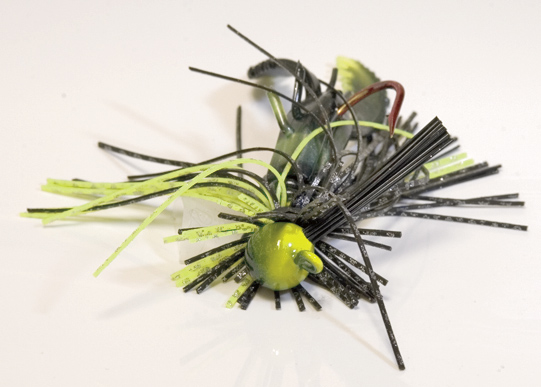
Ever since FLW Outdoors instituted a Co-angler Division in all of its bass tournaments, fishing from the back deck has evolved into a science.
As most good co-anglers have discovered, the key to becoming a back-deck ace is to take what the pro is leaving behind and make the best of it. It’s an exercise in resourcefulness and expediency.
I have covered dozens of FLW Outdoors events over the last several years, and I always take a particular interest in how the winning co-angler survived the elimination rounds and excelled in the finals.
What follows in this edition of Tournament Tested is a quick top-10 list of lures that continually make the co-angler headlines.
10) Finesse Jig – Small, compact jigs like the FLW Finesse Jig teamed with “junior” chunks or trailers are excellent baits to use behind pros who are pitching full-size jigs to isolated cover.
“When I have to make presentations to the same targets as my pro, I usually try to go with something smaller,” said co-angler David Hudson of Jasper, Ala., who has made all but one Forrest L. Wood Championship.
Hudson normally employs a finesse jig with a Zoom Super Chunk Jr. tied to 12- to 15-pound-test line.
“It provides a different look for fish that may have passed on the first offering by the pro,” he added.
 9) Rattling Lipless Crankbait – The industry standard in this department is the Bill Lewis Rat-L-Trap, but other companies make various renditions of this proven fish catcher.
9) Rattling Lipless Crankbait – The industry standard in this department is the Bill Lewis Rat-L-Trap, but other companies make various renditions of this proven fish catcher.
Carry a couple of different sizes, namely a 1/4 ounce and a 1/2 ounce. The action between the two sizes is drastically different, and fish can get picky about which size they prefer.
These lures are typically used to garner reaction bites from grass-bed bass in water temperatures less than 60 degrees. They are indispensable on places like Lake Guntersville, Seminole or Sam Rayburn during the prespawn.
They come in dozens of colors, but the standby hues are red, gold and chrome with a blue back.
Also, consider using braided line on a “trap.” Braid is much more durable, and the diminished stretch allows for a cleaner snap out of clingy grass.
 8) Jerkbait – This entry mostly applies to open-water fishing for smallmouths on northern lakes in the summer and fall.
8) Jerkbait – This entry mostly applies to open-water fishing for smallmouths on northern lakes in the summer and fall.
If your pro starts catching big smallies with a suspending jerkbait, you don’t want to be caught without one.
The Bomber Long-A was the forerunner for this technique, but the Lucky Craft Pointers and Rapala Husky Jerks have become hot commodities for open-water smallmouth jerkbaiting.
Other back-deck producers in the jerkbait category include the suspending Smithwick Rattlin’ Rogue and the Rapala 13G minnow.
The suspending Rogue is hard to beat on Ozark impoundments, and the floating Rapala is a staple for Florida fishing.
Fluorocarbon line in the 8- to 12-pound-test class is becoming popular for the jerkbait technique because it allows the bait to get a little deeper than monofilament.
 7) Topwater Walker – Though back-deck wins solely on topwater baits are rare, many co-anglers have admitted to catching key “kicker” fish during an event on topwater walking baits such as a Zara Spook, Super Spook or Lucky Craft Sammy.
7) Topwater Walker – Though back-deck wins solely on topwater baits are rare, many co-anglers have admitted to catching key “kicker” fish during an event on topwater walking baits such as a Zara Spook, Super Spook or Lucky Craft Sammy.
The traditional time for these baits is the postspawn: late spring and early summer.
Ironically, though, my records indicate that some of the key fish caught by co-anglers on topwaters came when the topwater bite was least expected: in the prespawn (usually spotted bass lakes), in the middle of the afternoon on a hot summer day or on a frigid fall morning.
It might sound crazy, but think of a topwater walker as a “kamikaze” bait. Don’t be afraid to wing one out in the middle of a pocket to see if a renegade fish will explode on it while your pro is sight-fishing or flipping.
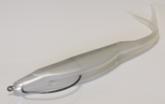 6) Fluke – Perhaps no other bait can wear as many different hats as a Zoom Fluke. This soft-plastic jerkbait can be Texas rigged, Carolina rigged, put on a heavy darthead for summertime ledge fishing, used as a spinnerbait trailer or just fished weightless with a 4/0 or 5/0 offset hook.
6) Fluke – Perhaps no other bait can wear as many different hats as a Zoom Fluke. This soft-plastic jerkbait can be Texas rigged, Carolina rigged, put on a heavy darthead for summertime ledge fishing, used as a spinnerbait trailer or just fished weightless with a 4/0 or 5/0 offset hook.
A Fluke is a kind of jack-of-all-trades of the co-angler’s tackle box.
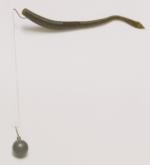 5) Drop-shot – In 2004, Stephen Tosh Jr. of Modesto, Calif., opened co-anglers’ eyes to the magic of drop-shotting when he won two FLW Tour co-angler titles in a single season with the finesse technique.
5) Drop-shot – In 2004, Stephen Tosh Jr. of Modesto, Calif., opened co-anglers’ eyes to the magic of drop-shotting when he won two FLW Tour co-angler titles in a single season with the finesse technique.
Tosh proved that the drop-shot catches big fish on southern impoundments where power fishing often prevails.
He won on Kentucky Lake and Lake Logan Martin using his favorite setup: 6-pound-test line, a Kinami cut-tail worm and drop-shot weights ranging from 1/4 ounce to 3/8 ounce.
4) Tube – The standard 4-inch tube is a versatile soft plastic that does double duty as a dragging bait for smallmouths and a pitching bait for largemouths.
Fishing a tube for smallmouths requires a supply of leadheads in various sizes that can be inserted into the tube so it can be fished like a grub or dragged along the bottom.
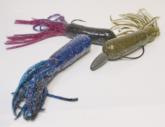 Flipping or pitching a tube calls for rigging it Texas-style with a bullet weight and an offset hook, preferably a “wide-gap” model.
Flipping or pitching a tube calls for rigging it Texas-style with a bullet weight and an offset hook, preferably a “wide-gap” model.
At the 2004 Forrest Wood Open on Lake Champlain, Jason Knapp of Uniontown, Pa., used a 4-inch Mizmo tube both ways to win the $40,000 co-angler top award.
During the qualifying rounds, he caught smallmouths by dragging a tube. On the final day, he drew a pro who was flipping shallow vegetation, and Knapp simply rigged the tube with a 1/2-ounce weight on his flipping stick to catch largemouths for the win.
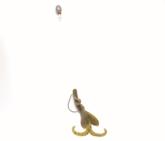 3) Carolina Rig – In FLW Outdoors’ early years, the Carolina rig was the co-angler’s bread and butter.
3) Carolina Rig – In FLW Outdoors’ early years, the Carolina rig was the co-angler’s bread and butter.
Since then, co-anglers have become proficient at many other tactics, and the “rig” has sort of fallen by the wayside.
But always carrying the ingredients to make a Carolina rig is like cheap insurance. When all else fails, the old Carolina rig can really come through to post a few keepers on the board and stay in the hunt for a check.
 2) Jighead Worm – A 4-inch finesse worm impaled on a tiny 1/8-ounce jighead, like a Spotsticker or Spot Remover, has put a lot of money in co-anglers’ pockets. The finesse rig, often fished on a spinning rod with 6- to 10-pound line, can be a co-angler’s best friend, especially on lakes where spotted bass live.
2) Jighead Worm – A 4-inch finesse worm impaled on a tiny 1/8-ounce jighead, like a Spotsticker or Spot Remover, has put a lot of money in co-anglers’ pockets. The finesse rig, often fished on a spinning rod with 6- to 10-pound line, can be a co-angler’s best friend, especially on lakes where spotted bass live.
The late W.D. “Hoot” Gibson of Bryant, Ark., was one of the best at the finesse-head game, and he used it all over the country to amass a total of $83,638 in his co-angling career with FLW Outdoors.
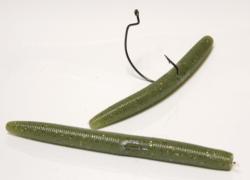 1) Senko – Over the last few years, the Yamamoto Senko, or Kinami Flash, has become the go-to bait for co-anglers. Some pros even admit to wincing when they see their co-angler pull out a bag of the soft stick baits that sink with a seductive wiggle.
1) Senko – Over the last few years, the Yamamoto Senko, or Kinami Flash, has become the go-to bait for co-anglers. Some pros even admit to wincing when they see their co-angler pull out a bag of the soft stick baits that sink with a seductive wiggle.
These baits have few bounds in terms of where or how they can be fished. Muddy water is just about the only condition that prohibits their use.
They can be Texas rigged, Carolina rigged or flipped into heavy cover. But as many co-anglers have discovered, soft stick baits work best when they are rigged weightless with a 4/0 or 5/0 hook. Then just cast it out, let it sink and wait for a bite.